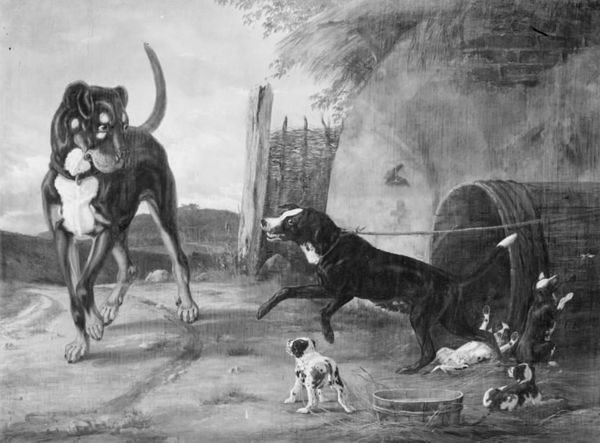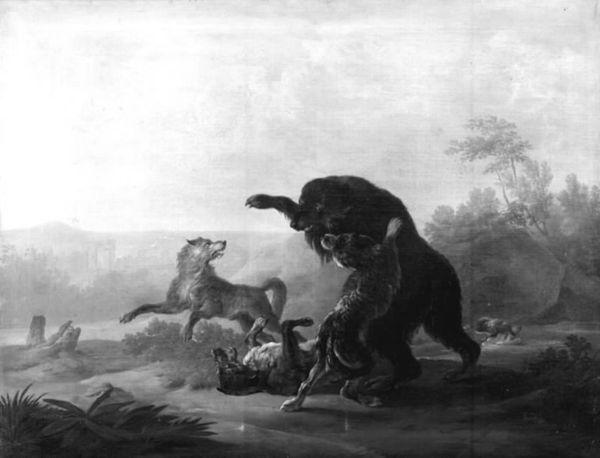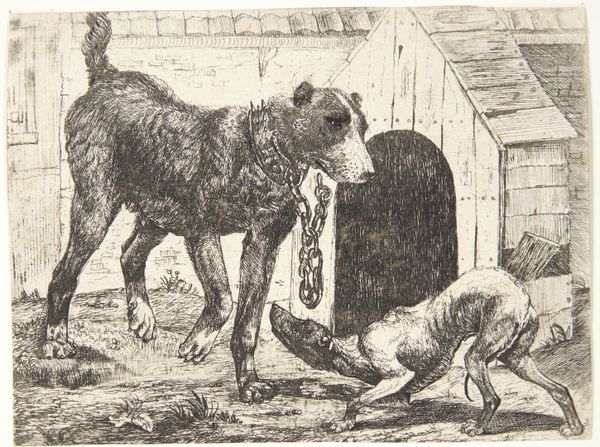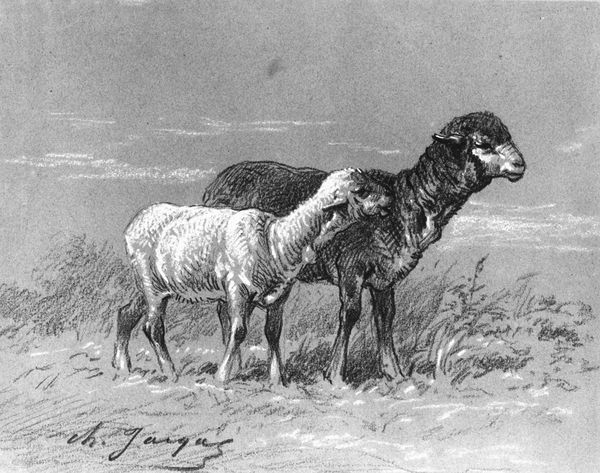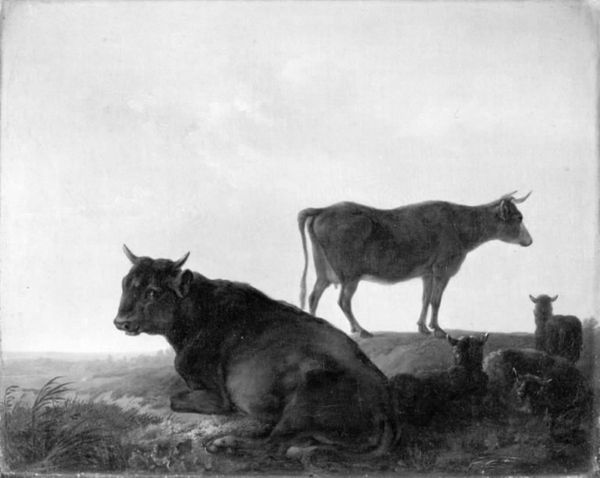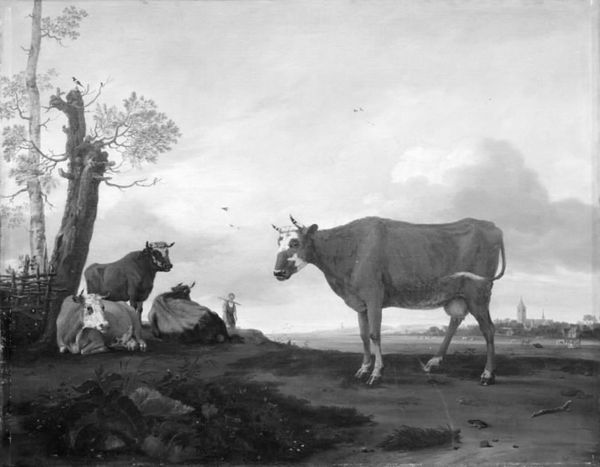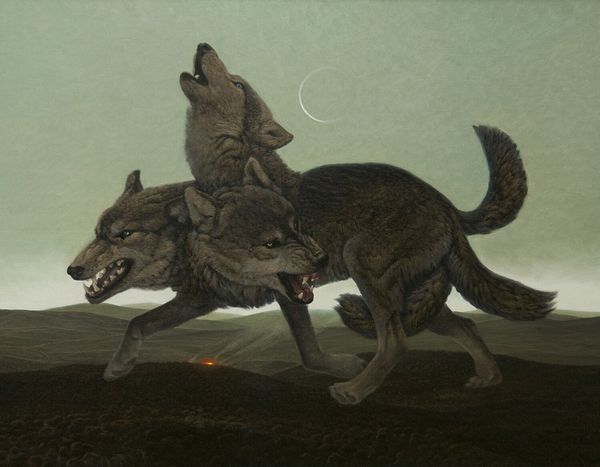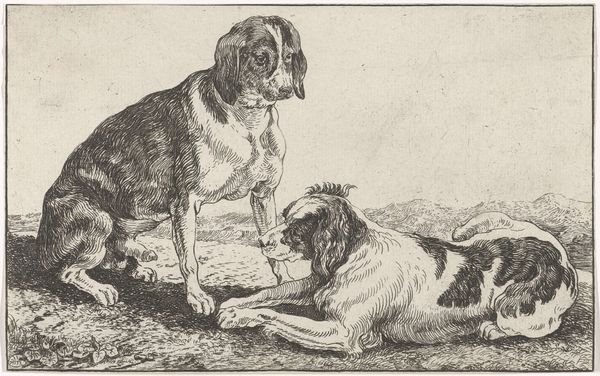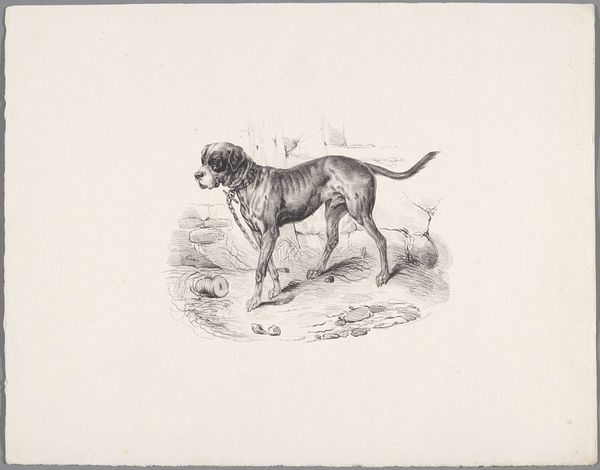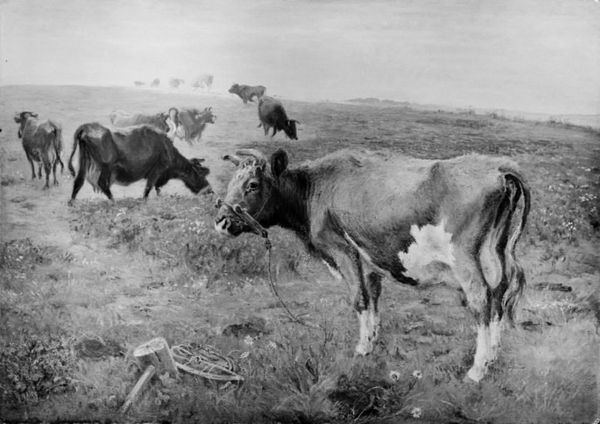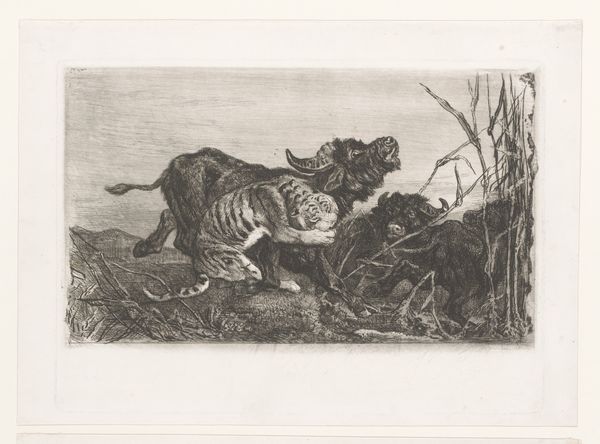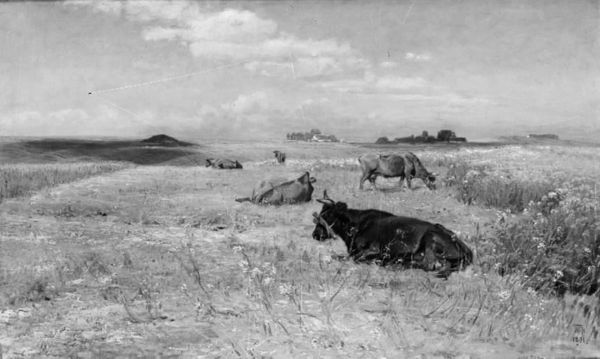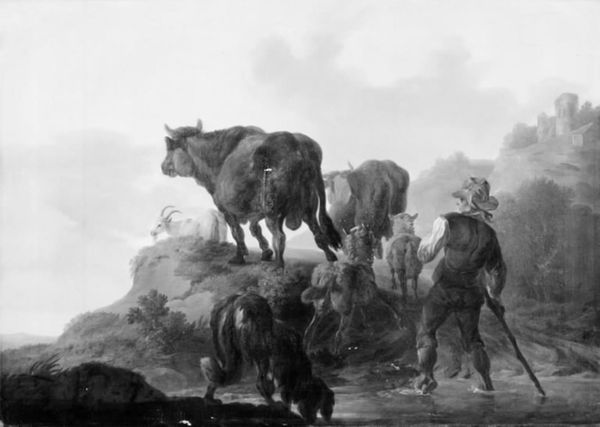
painting
#
painting
#
landscape
#
figuration
#
romanticism
#
animal portrait
#
charcoal
#
realism
#
monochrome
Dimensions: 81 cm (height) x 104 cm (width) (Netto)
Curator: Theodor Kiellerup painted "Et par hunde som opgraver et muldvarpeskud," or "A Pair of Dogs Digging Up a Molehill," in 1838. It’s currently held here at the SMK. Editor: What strikes me immediately is the monochrome palette, the almost sculptural treatment of the dogs’ forms rendered against the slightly blurred landscape. It’s a study in black and white, focusing the eye on texture and form. Curator: And the dog breeds, seemingly quite different, are unified in this shared activity. We have what looks to be a larger Pointer and a smaller Spaniel-type, suggesting perhaps gentry life and its sporting culture. These were hunting dogs, likely owned by someone of considerable means. Editor: The relationship between the dogs, and the unseen mole, implies collaboration but also different access to the ‘means of production’ of molehill digging. The pointer is lanky and above it all, the spaniel all industry! Curator: That is a great point. Consider how important the burgeoning middle class became to artistic markets at that time. Paintings of pets, like these dogs, personalized displays of status and belonging. They signal something of a shift from aristocratic patronage. Editor: Absolutely. You see that reflected in the material execution itself, though—notice the density of the paint, and how that evokes earthiness? This isn't about mere aesthetic pleasure; the very act of digging is rendered tangible by the impasto. How labor-intensive it must have been for the artist. Curator: What's also interesting is the level of detail against the muted landscape. It prioritizes this simple country pastime over grand historical narratives. It speaks to changing societal values—placing importance on the quotidian. Editor: The ‘low’ subject is definitely elevated through artistic skill. The monochrome actually emphasizes the labor and transformation of the ordinary to ‘high’ art, reminding us that the social position of the artist also influences its status. Curator: Precisely. Reflecting on this painting, I find myself drawn to the quiet confidence it exudes, confident in its humble subject. Editor: It gives food for thought indeed: this material object gives tangible evidence to canine activity. Now *I* am keen to dig into more such images in the collection!
Comments
No comments
Be the first to comment and join the conversation on the ultimate creative platform.
